AWS Cloud Practitioner CLF-C02
Billing and Pricing
How Account Structures can affect billing
Welcome back, AWS Cloud Practitioners. In this article, presented by Michael Forrester, we explore how different AWS account structures influence your billing process and cost optimization. Read on to understand the benefits of consolidating your usage and how tools like AWS Organizations and Control Tower can help.
Single Account
Managing a single AWS account keeps billing simple. Every Reservation, Savings Plan, or licensing model you purchase applies exclusively to that account, resulting in a straightforward billing process.
Multiple Accounts with Consolidated Billing
When you link multiple AWS accounts through AWS Consolidated Billing, a single payer account is designated to handle all invoices. This setup ensures that all services running across the linked accounts are invoiced to one central account.
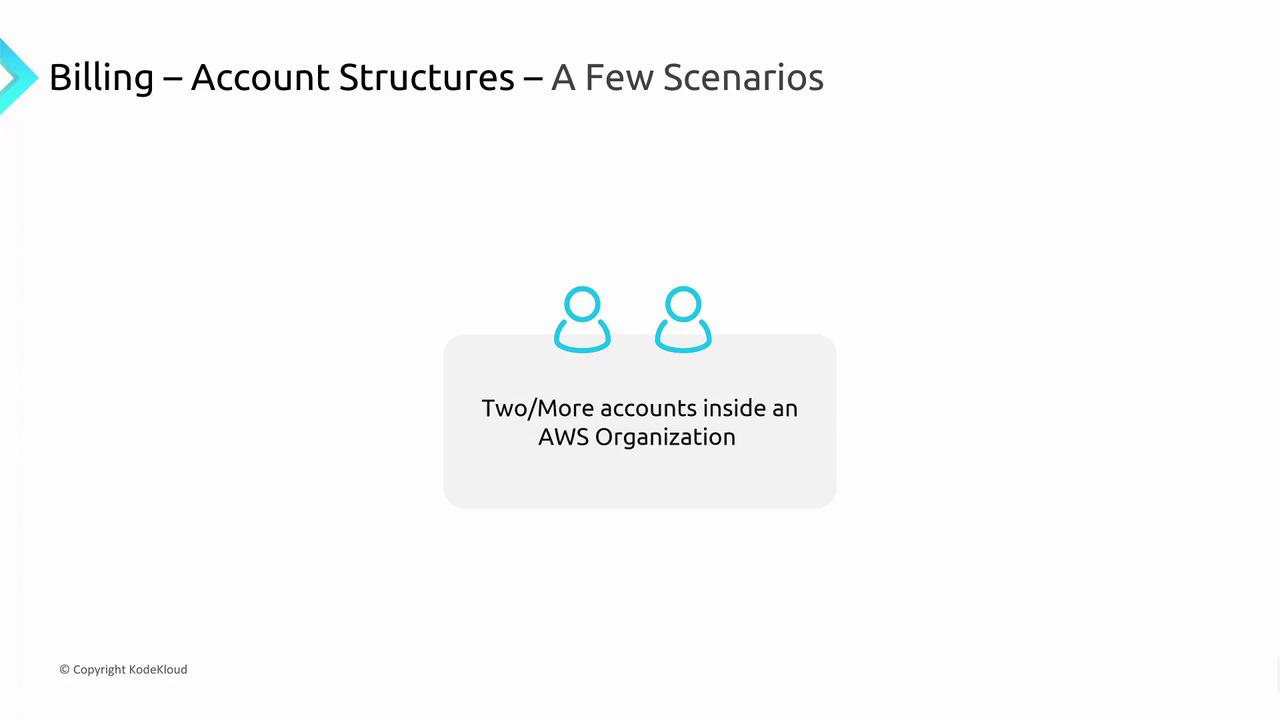
AWS Organizations
AWS Organizations builds upon the Consolidated Billing model by integrating centralized management. Within an Organization, the management account acts as the payer for all member accounts. For example, if your organization consists of 15 AWS accounts, all billing benefits—such as volume discounts and Reservations Plans—are applied across the entire organization.
Using Control Tower
Control Tower offers a best-practice implementation of AWS Organizations. It configures a Management Account alongside other specialized accounts (such as Security and Member Accounts) while maintaining a single payer account. This consolidated approach ensures that all billing benefits, including Reservations and Savings Plans, flow directly to the payer account.
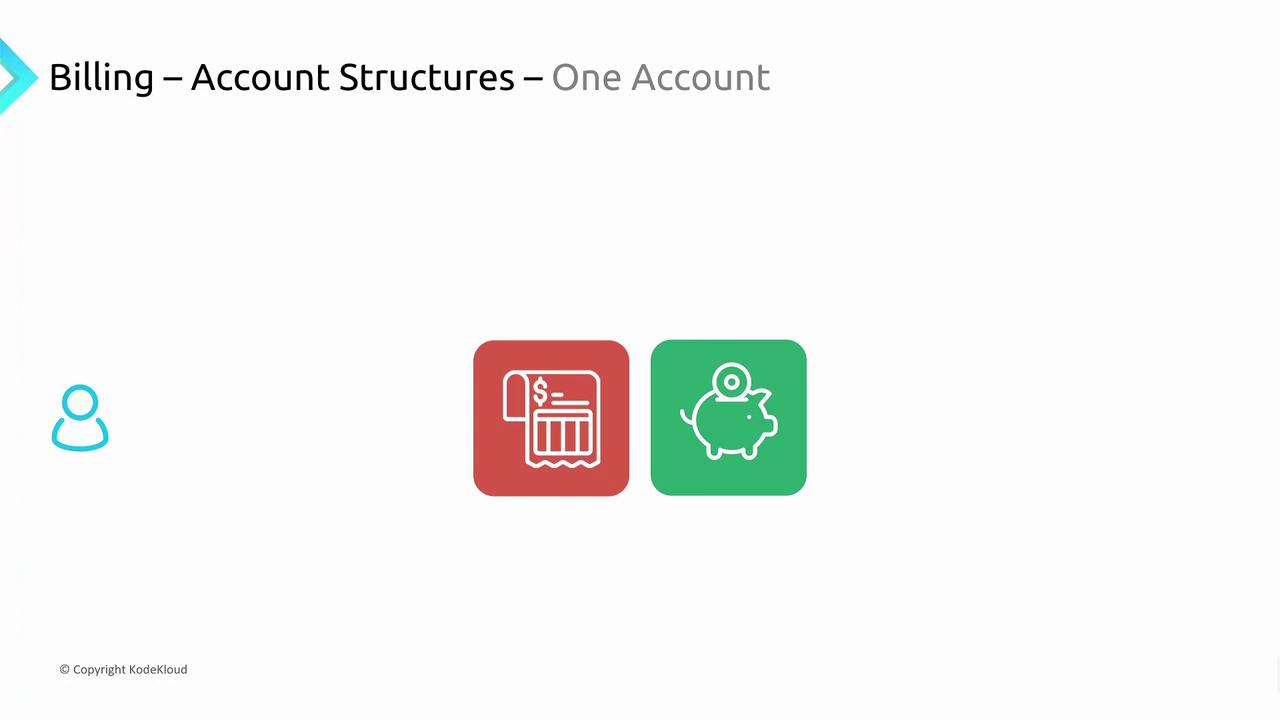
When Consolidated Billing is enabled without the full capabilities of Organizations, the core concept remains: one payer account handles charges for all linked accounts. For instance, if three accounts each use 10 terabytes of S3 storage (totaling 30 terabytes), AWS aggregates the usage across accounts to calculate volume discounts.
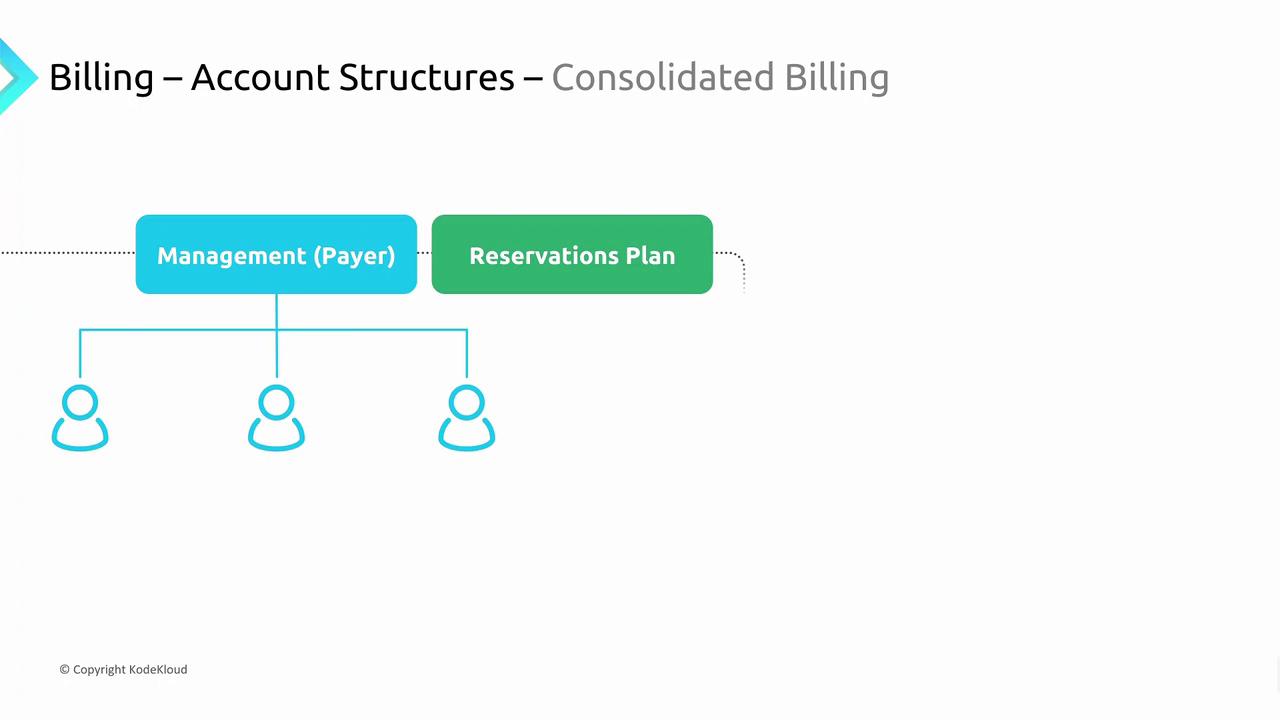
This model means that Reservations or Savings Plans purchased in one account benefit all linked accounts. You receive a consolidated bill that can be itemized for deeper insights, and the combined usage secures bulk discount pricing—even if one account's usage declines.
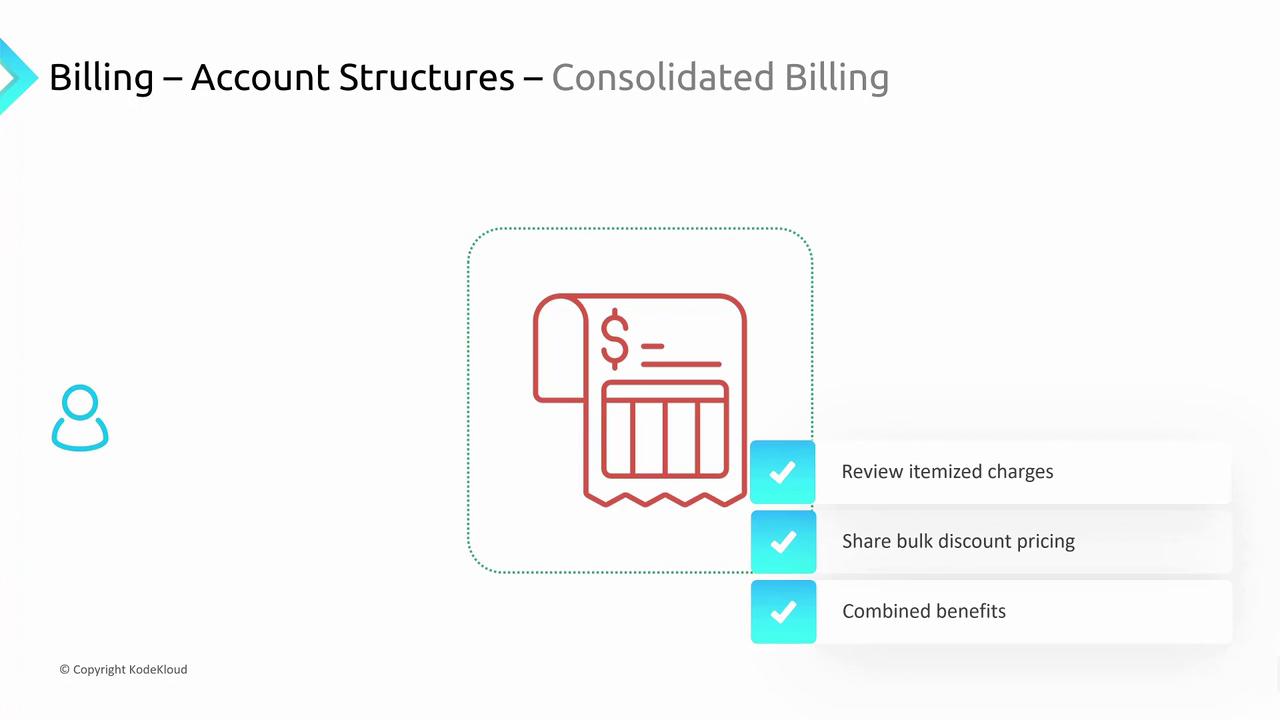
Summary of AWS Account Structures
In an AWS Organization, similar to the Consolidated Billing setup, a central management account acts as the payer. Billing benefits such as Savings Plans and Reservations are automatically shared among all member accounts. Optionally, you can apply Service Control Policies to further manage your organization's accounts.
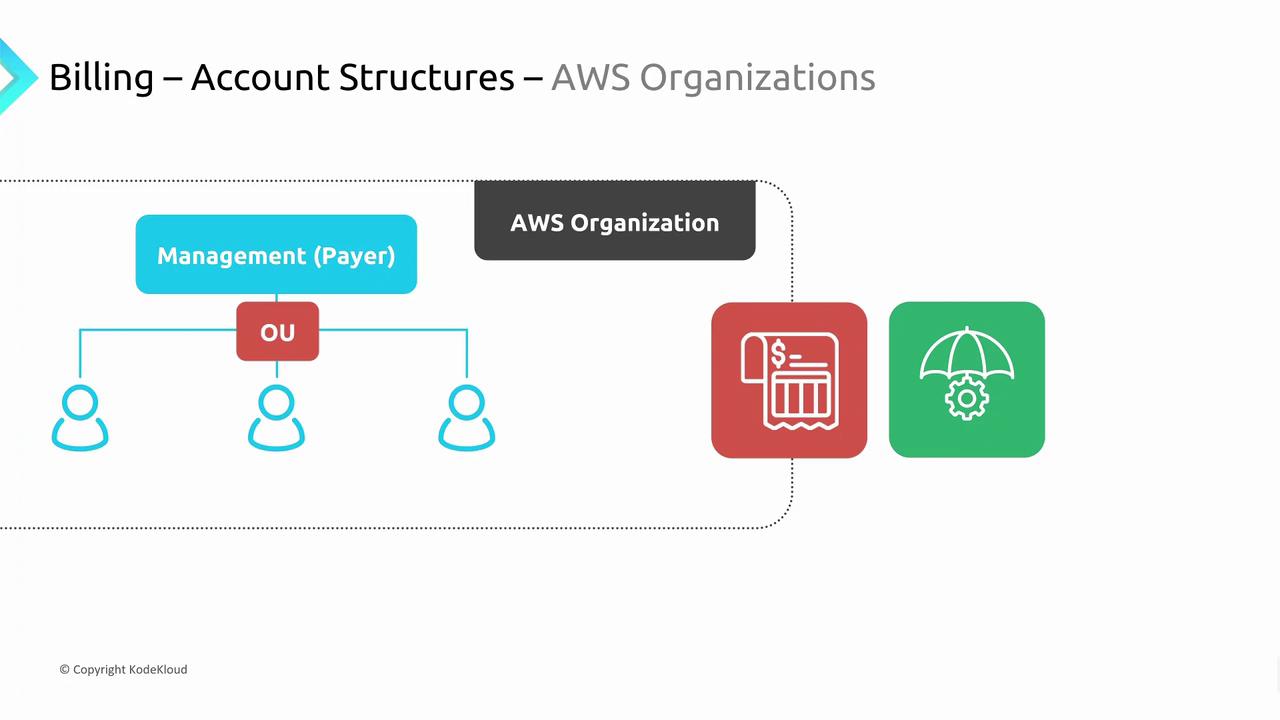
Control Tower extends these benefits by incorporating best practices like Single Sign-On and enhanced security features, all while maintaining consolidated billing under one management account.
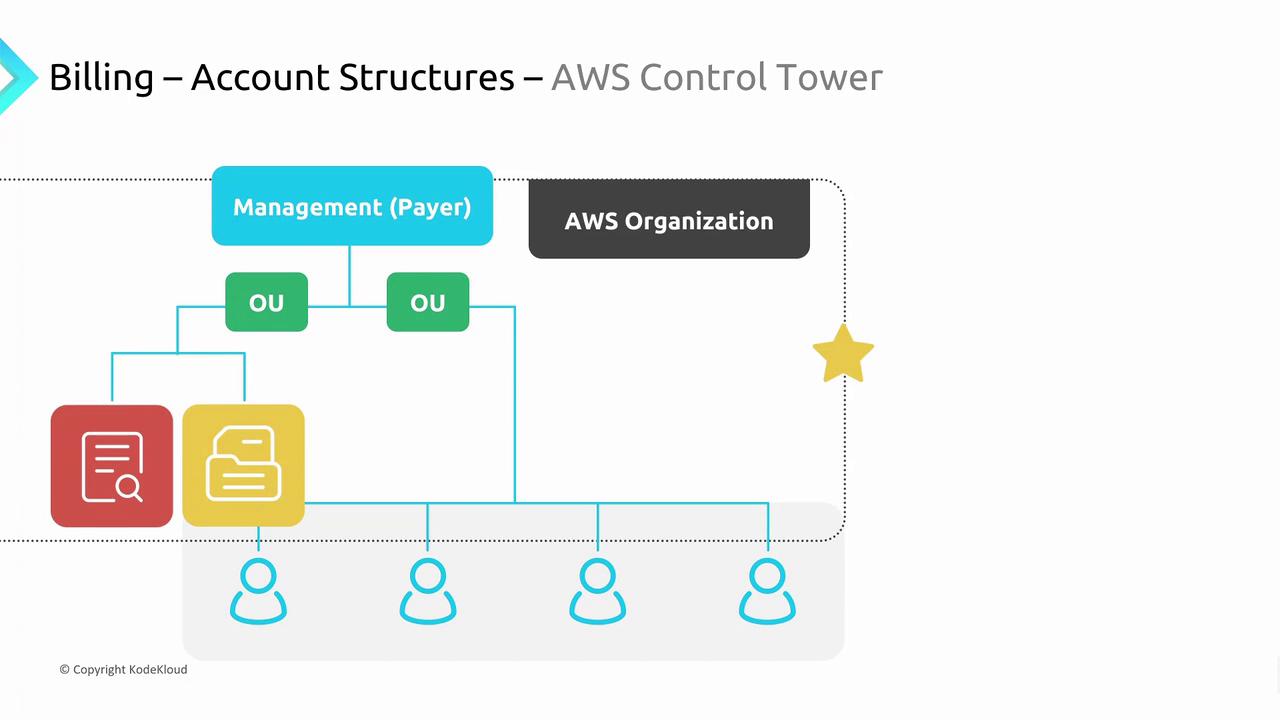
Consolidated Billing Benefits
To recap, enabling Consolidated Billing, AWS Organizations, or Control Tower means:
- A single payer account receives one consolidated bill.
- Billing benefits such as Reservations and Savings Plans are shared across all accounts.
- Detailed, itemized billing data is available, ensuring that volume discounts are based on the aggregate usage of all linked accounts.
Solo accounts continue to operate independently, with their own billing and savings, while multiple accounts can work together to maximize the cost benefits of consolidated billing.
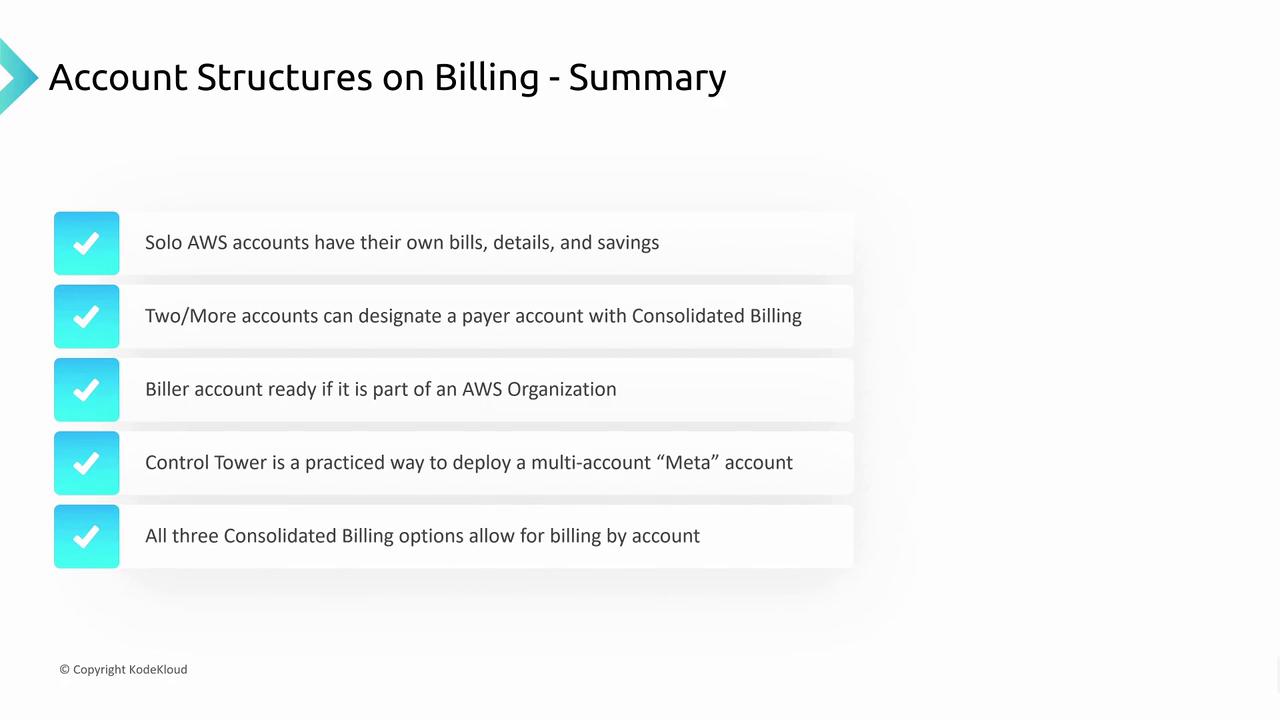
Note
Centralizing billing through AWS Organizations or Control Tower not only simplifies management but also helps optimize overall costs by leveraging shared discounts and Benefits.
This article has detailed how various account structures impact AWS billing and cost benefits. Understanding these structures will help you make informed decisions on whether to consolidate your accounts or manage them individually.
I'm Michael Forrester, and thank you for reading this article. For more information, be sure to visit AWS Documentation.
Watch Video
Watch video content